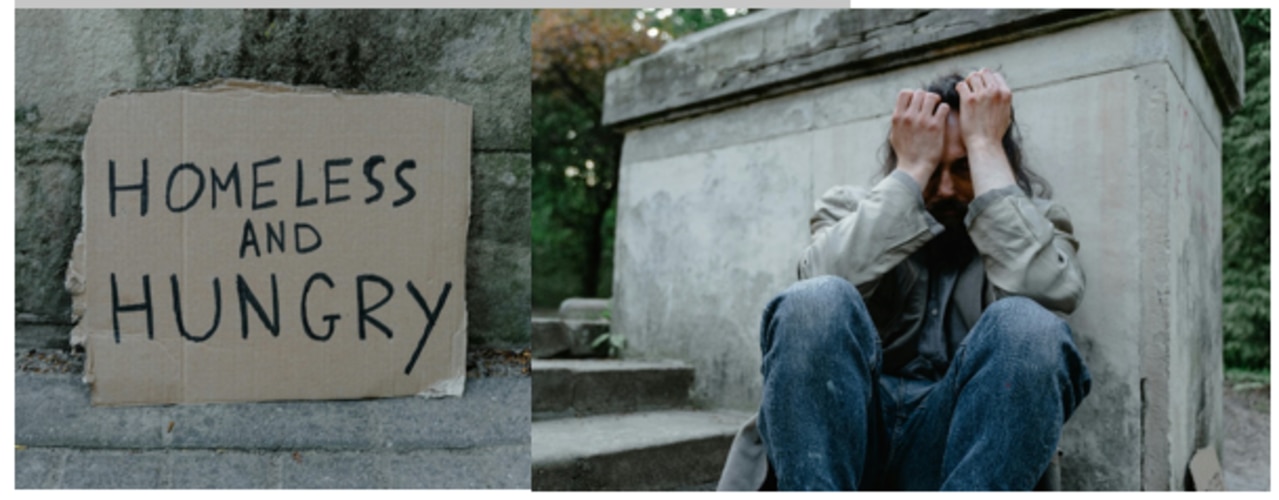Struggling families flock online for help managing cost of living crisis
2024 Junior Journalist competition entry – Secondary News Story (Print) category – WARNING: RED LEVEL (secondary only): Hungry households are asking for help through social media

READING LEVEL: RED
Struggling families plagued by stigma and shame are turning to social media platforms to seek help anonymously amid a cost of living crisis.
It comes as new research shows food banks, welfare agencies and support services are experiencing unprecedented demand.
Single parents are among the hardest hit in Victoria, with nearly 70 per cent struggling to put food on the table.
Many are turning to social media platforms and online community groups to seek help with food, clothing, nappies and other donations – often as a last resort after they’ve exhausted other avenues.
Some online groups have discouraged people from asking for direct monetary assistance in a bid to safeguard members. Members can post anonymously in the first instance to seek help with items such as clothing, household goods and food.

Hunger relief organisation Foodbank Australia reports that 3.7 million households have run out of food in the past year and that “food insecurity” is impacting many households.
The organisation redistributed enough food for 32 million meals in 2011. In 2023, a spike in demand saw the organisation redistribute enough food for more than 92 million meals.
In Victoria alone, more than 540,000 households went hungry over the past 12 months and resorted to skipping meals.
A Foodbank Victoria spokesman said that shame and stigma around food insecurity was real and impacting families every day.
“Research from the past year shows that shame and stigma continue to be the biggest barrier to seeking food relief,” the spokesman said.
More than 60 per cent of Foodbank’s charity partners also report that shame prevents people from seeking help.

“Turning to social media to seek support could be taken as a last resort considering that associated stigma,” the spokesman said.
The crisis is also impacting children at school, with charity organisation The Smith Family reporting that families are being forced to make tough decisions.
The Smith Family CEO Doug Taylor said some families had to choose between paying bills and sending their children to school with lunch.
“The fact that so many families are struggling to afford things as basic as school lunches or books shows just how deeply the cost of living crisis is affecting families across the country, particularly those families that were already experiencing disadvantage,” he said.
Food Rescue organisation SecondBite estimates that more than one-third of Victorian households experienced food insecurity over the past 12 months and the situation is worsening.

One parent, who did not wish to be named, said the situation was “sad and extremely concerning” and it was becoming more common.
“A lot of these groups and Facebook pages are getting inundated with requests for help,” she said.
“It’s a very sad indication of the tough environment that we are living in.”
The parent cautioned that this method of seeking help came with risks and she had witnessed the generosity of some people being exploited.
Charity organisations such as the Big Group Hug have also put the call out online for nappies, toothpaste and other items to meet the current level of demand.
HUNGER HURTS
Mother of two Pamela* never thought she’d be skipping meals so her kids wouldn’t have to.
But a relationship breakdown, financial struggles and mental health challenges catapulted her into a new reality that’s knocked her for six.

On the other side of town, single parent Mary* feels like she is sinking under the weight of debt, stress and household bills that just keep mounting.
They come from different parts of Australia, have different life stories and do not know one another, yet they have one thing in common – both are struggling amid a cost of living crisis.
“Unless my situation changes between now and then, my kids won’t be having Christmas,” Mary said.
“After I pay my rent, groceries and put a small amount on my electricity bill, I’m left with $8.40 per week.”
Charity organisations are also struggling to meet demand.
Foodbank Victoria reports that it was feeding around 50,000 people a day at the start of 2023.
“Now, we have 69,000 people a day relying on Foodbank Victoria as they struggle to deal with ongoing cost of living impacts,” a spokesman said.
“We’re also seeing households with mortgages feeling the pressure, with almost one-third of Victorian households with mortgages living with stress and worry about food.”

In regional Victoria, nearly 40 per cent of people have struggled to feed themselves and their families over the past year.
“Above all, the face of food insecurity is continuing to change compared to what you might expect,” a Foodbank Victoria spokesman said.
“Stagnant wage growth in the last 12 months has meant that even full-time workers have struggled to afford food.
“Our biggest challenge is sourcing enough food to meet growing demand from our community and charity partners.
“As the cost of living crisis is impacting everyone across our entire network – including retailers, farmers, growers, and wholesalers – we’re seeing less food coming in through our donated channels.
“As a result, we’ve had to spend a record amount on purchasing product to meet demand as it continues to climb.”

If you or anyone you know is experiencing food insecurity, help is available via charities such as Foodbank Australia, FareShare, The Smith Family, The Salvation Army and Vinnies.
* Names have been changed for privacy reasons.
Please note: Images were added to this Junior Journo competition entry by Kids News editors and minor edits applied as per publishing requirements and editorial guidelines on the site.

